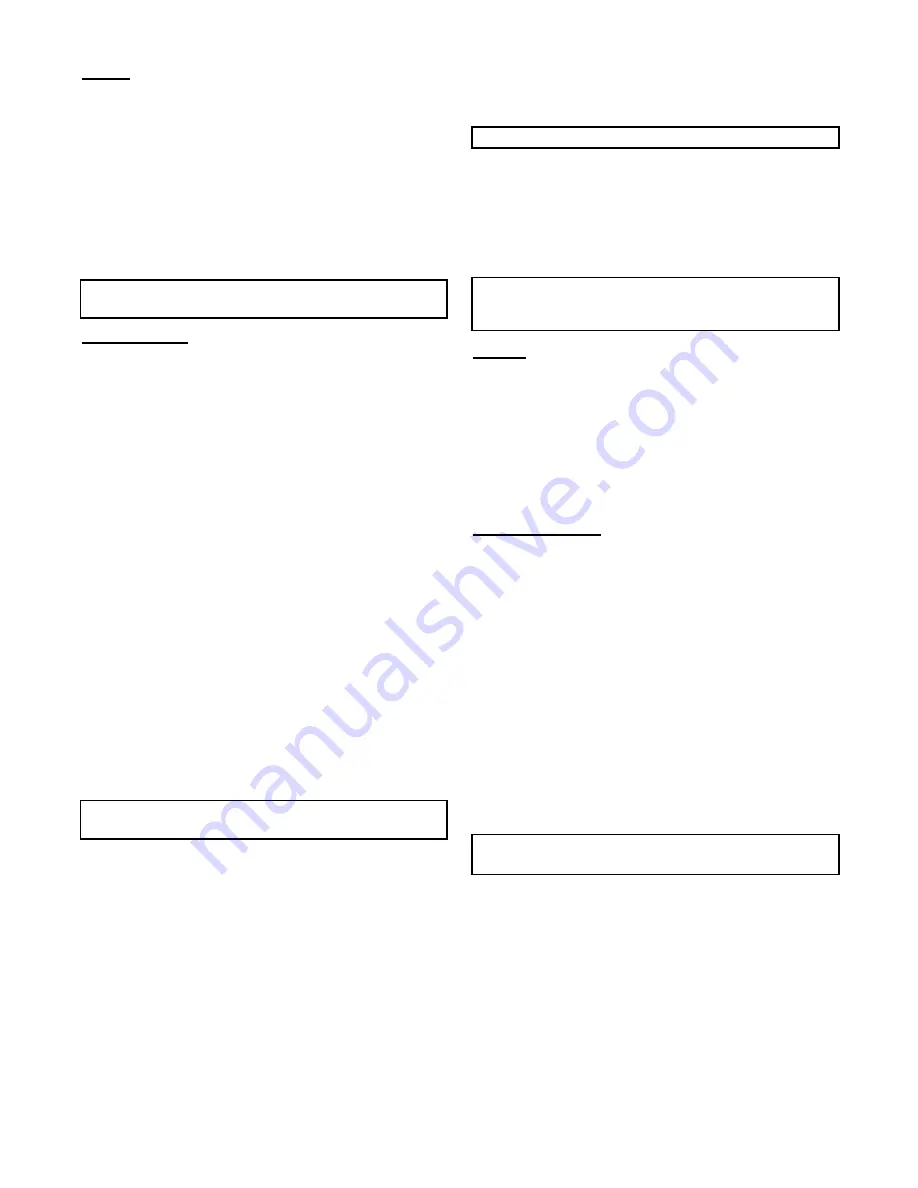
4
General
Sometimes, it is not possible to reduce a hazard by eliminating it,
substituting a less hazardous process or product, making changes
to equipment, or even by changing how you do the job. That’s
when you need personal protection.
PPE includes items like gloves, goggles, boots, hearing protection
and respirators. Respirators filter out particles or block gases and
vapors that can harm the respiratory system. With a surface area
well supplied with blood vessels and equal in size to a tennis court,
the lungs are the quickest and most direct route for absorbing
harmful substance into your body.
Note:
PPE does not prevent accidents, but it does prevent or re-
duce injury and even fatalities when used properly.
Equipment (PPE)
Protective equipment must be selected carefully. Always test fit
the protective equipment to be sure it fits properly and comfort-
ably. If it isn’t comfortable -- it won’t be worn; if it isn’t worn -- it
won’t protect. PPE includes:
• respirators
• chemical-resistant clothing
• hearing protectors
• gloves
• safety goggles and glasses
• hard hats
• sensors to detect hazardous substance
• communication devices used for safe
deployment of workers
Inhaling pesticide fumes and mists is a very common entry route
of pesticides into the body. Absortion through the lungs is great
and the sensitivity is high.
The National Institute for Occupational Safety and Health
(NIOSH), under authority of the Federal Mine Safety and Health
Act of 1977 and the Occupational Safety and Health Act of 1970,
tests, approves, and certifies respiratory equipment as being safe
for its intended purpose.
Note:
Always be certain that the NIOSH compliance number is
on the product before purchasing respiratory equipment.
Two systems of respiratory protection are available, depending
on the type of respiratory risk involved: air-purification (filtering)
and air-supplying. For most pesticide work, the air-purifying
equipment is adequate and safe.
Protective equipment is usually required by the pesticide label in
one form or another and is integral to safe pesticide application.
Chemical-protective clothing consists of multilayered garments
made out of various materials that protect against a variety of haz-
ards. Because no single material can protect against all chemi-
cals, multiple layers of various materials usually are used to
increase the degree of protection. Protection is maximized by to-
tal encapsulation (completely covering the wearer). An assort-
ment of types of chemical-protective hats, hoods, gloves, and
boot covers are used with the garments.
There are many brands and models of protective equipment avail-
able for use in pesticide application. Price is not always an indi-
cator of quality, so shop carefully.
Note:
Select equipment that is
NIOSH tested and approved.
Protective equipment, appropriate for the task and hazards that an
employee could be exposed, shall be provided by the employer.
Since comfort and proper fit must be considered, the person who
is going to use it must select the proper size to ensure correct fit
and function. Unused protective equipment does not help any-
one.
Note:
Many supply centers, hardware stores, chemical retailers,
and equipment/machinery dealers keep protective equipment in
stock.
Training
Written procedures shall be developed for PPE use. These proce-
dures shall include all information and guidance necessary for
their proper selection, use and care. The employer shall provide
fitting instructions including demonstrations and practice in how
the PPE should be worn, It is essential that both supervisors and
workers be properly instructed in PPE selection, use, and mainte-
nance. Training shall provide the workers an opportunity to han-
dle PPE, and have it fitted properly.
When to replace PPE
All PPE shall be inspected routinely before and after each use. A
program for maintenance and care of PPE shall be initiated and be
adjusted to the type of work place, working conditions, and haz-
ards. It shall include the following:
• inspection for defects and damage
• cleaning and disinfecting
• repair
• storage
Many factors influence how long PPE (especially respirators) re-
mains effective. As well as hours of use, an air-purifying respira-
tor’s service life is affected by the concentration of dust and other
contaminants in the enviroment; the user’s body size; how strenu-
ously the user works while the respirator is worn; and how the res-
pirator is stored.
Note:
As a result, it’s not possible to specify a length of time after
which a respirator should be replaced.
In general, replace a mask or filter when it is visibly dirty or dam-
aged, or when you experience difficulty breathing through it. Re-
place respirator cartridges when you can smell or taste chemical
while or after using the respirator, or according to the manufactur-
er’s recommendations. Replacement or repairs shall be done only
by experienced person with parts designed for the PPE. No at-
tempts shall be made to replace components or to make adjust-
ments or repairs beyond the manufacturer’s recommendations.






























